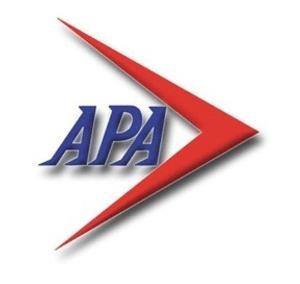Letter Of Agreement Outlines Pay Protection And Voluntary Leave Options
The APA Board of Directors convened a voting conference call Sunday, and following a briefing by APA Negotiating Committee Chairman CA John Karam and Director of Pilot Negotiations and Contract Administration Mark Myers, the board voted to approve Letter of Agreement 20-001 – Novel Coronavirus (COVID-19).

LOA-20-001 has two primary provisions: Pay Protection for pilots impacted by COVID-19, and incentivized Voluntary Leaves of Absence. "I encourage everyone to read the full text of the LOA, but here is a 30,000-foot view of the agreement," said APA president CA Eric Ferguson in a statement posted on the APA website.
Pay Protection:
Pilots who are placed in quarantine based on concerns related to COVID-19 or who are diagnosed with COVID-19 will be pay protected during the duration of the evaluation, treatment, or quarantine.
Pay protection also applies to pilots who self-quarantine due to a family member being diagnosed with COVID-19.
Pilots who call in sick and are subsequently diagnosed with COVID-19 will have their sick time restored to their bank and will be pay protected.
Voluntary Leaves of Absence:
Three different voluntary Leaves of Absence will be offered. The special voluntary leaves are designed to reduce temporary pilot overages caused by current circumstances.
Voluntary Extended Leaves of Absence (“VELOA”): A VELOA will be an unpaid leave; however, the pilot will continue to accrue Length of Service (LOS), will continue to have access to employee benefits at active pilot rates, and will retain travel privileges similar to an Active pilot. These leaves may be up to 12 months in duration.
Voluntary Short-Term Leaves of Absence (“VSTLOA”): Pilots who take a VSTLOA will be paid 55 credited hours per month for the duration of the leave. Leaves will be 1, 3, or 6 months long. The pilot will continue to accrue sick and vacation, be eligible for all benefits at the same rates as active pilots, and retain travel benefits. Pay for the 55 hours will be eligible for 401(k) contributions and profit-sharing calculations. Pilots on a VSTLOA will be required to maintain currency but will have no other flying obligations.
Voluntary Permanent Leave of Absence (“VPLOA”): Pilots between the ages of 62 and 65 will be eligible for a VPLOA. VPLOA pilots will be paid 50 hours per month until age 65. VPLOA pilots are eligible for all benefits at the same rates as active pilots, and retain travel benefits. Pay for the 50 hours will be eligible for 401(k) contributions and profit-sharing calculations. At retirement, the balance of the pilot’s sick bank will be deposited into a Health Reimbursement Account (HRA) at 40% of the pilot’s applicable hourly rate. A VPLOA pilot will remain in this leave until retirement. This leave is permanent and cannot be changed by either the pilot or the Company.
The details regarding how these three leaves will be proffered to the membership are contained within the LOA, as well as the requirements and particulars of each leave.
Ferguson also acknowledged that many pilots are concerned about the possibility of furloughs. "I can tell you that at this point, the likelihood of a furlough has not been suggested by either side. If that changes, we will let you know immediately," he said in the statement. "One of the main objectives of the LOA ratified today is to mitigate that threat. At this point, it is too early to tell if we are headed down that path, but understand that stopping and reversing the training machinery would be incredibly costly and time-consuming. It is in our mutual interest to avoid reductions by way of furlough.
"Know that while we finally have the basic protections necessary for a professional pilot to operate in a fast-evolving public health emergency, your union leadership will continue to operate “all hands on deck” until this crisis has passed, and we will continue updating you daily for as long as the situation remains critical."
(Source: APA news release)
 Unfortunate... ANN/SportPlane Resource Guide Adds To Cautionary Advisories
Unfortunate... ANN/SportPlane Resource Guide Adds To Cautionary Advisories ANN FAQ: Turn On Post Notifications
ANN FAQ: Turn On Post Notifications ANN's Daily Aero-Term (04.29.24): Visual Approach Slope Indicator (VASI)
ANN's Daily Aero-Term (04.29.24): Visual Approach Slope Indicator (VASI) ANN's Daily Aero-Term (04.28.24): Airport Marking Aids
ANN's Daily Aero-Term (04.28.24): Airport Marking Aids ANN's Daily Aero-Linx (04.28.24)
ANN's Daily Aero-Linx (04.28.24)



